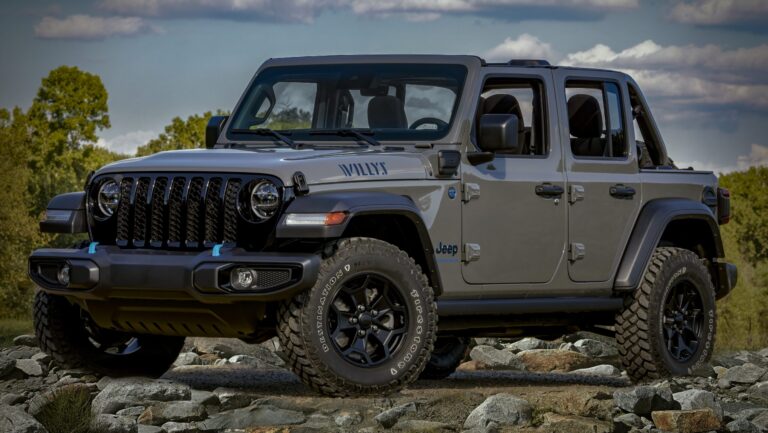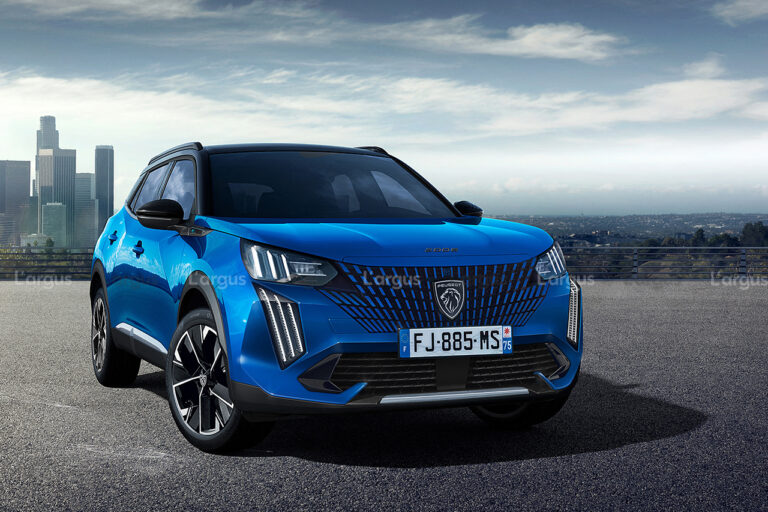1989 Jeep Wranglers For Sale: A Comprehensive Buyer’s Guide
1989 Jeep Wranglers For Sale: A Comprehensive Buyer’s Guide /jeeps.truckstrend.com
The year 1989 stands as a unique point in the storied history of the Jeep Wrangler. Nestled within the YJ generation (1987-1995), the 1989 model offers a compelling blend of classic Jeep ruggedness, a touch of modern comfort for its era, and the iconic, polarizing square headlights that define the YJ. For enthusiasts and collectors alike, a 1989 Jeep Wrangler for sale isn’t just a vehicle; it’s an opportunity to own a piece of automotive history, a capable off-road machine, and a canvas for personalization. This comprehensive guide will delve into everything you need to know about finding, evaluating, and owning one of these distinctive vehicles.
Why a 1989 Jeep Wrangler? The Enduring Appeal of the YJ
1989 Jeep Wranglers For Sale: A Comprehensive Buyer’s Guide
The appeal of the 1989 Jeep Wrangler is multifaceted. For many, it evokes a sense of nostalgia for a simpler time when SUVs were primarily built for utility and adventure, not just suburban commutes. The YJ, with its leaf-spring suspension and straightforward mechanicals, embodies this ethos.
- Classic Status: The YJ is firmly established as a classic, bridging the gap between the utilitarian CJ series and the more refined TJ and JK/JL generations. Its square headlights, while initially controversial, have become a defining and beloved characteristic.
- Off-Road Prowess: Despite its age, a well-maintained 1989 Wrangler remains an incredibly capable off-road vehicle. Its compact size, solid axles, and robust drivetrain make it adept at tackling challenging trails.
- Simplicity and Repairability: Unlike modern vehicles laden with complex electronics, the 1989 Wrangler is relatively simple to work on. Many repairs can be done by a knowledgeable DIY enthusiast, and parts are generally available and affordable.
- Customization Potential: The YJ platform is a favorite for customization. Lift kits, larger tires, engine swaps, and interior upgrades are common, allowing owners to tailor their Wrangler to their specific needs and tastes.
- Investment Potential: While not a blue-chip investment, well-preserved or expertly restored 1989 Wranglers are appreciating in value, especially those with lower mileage or desirable configurations.

Key Features and Specifications of the 1989 YJ
Understanding the specifications of the 1989 model year is crucial for potential buyers.
- Engine Options:
- 2.5L AMC 150 I4: This four-cylinder engine was the base offering, producing around 117 horsepower. It’s known for its reliability and decent fuel economy but is less powerful for highway cruising or heavy off-roading.
- 4.2L AMC 258 I6: The venerable "258" inline-six was the more popular and desirable option, offering approximately 112 horsepower and significantly more torque (around 210 lb-ft). While its horsepower rating might seem low, its torque makes it excellent for off-roading and provides better highway performance. Most 1989 258 engines were still carbureted, though some late 1989 models might have had throttle body injection (TBI) systems, typically found on the 1990 models.
:max_bytes(150000):strip_icc():focal(999x0:1001x2)/taylor-swift-eras-tour-1989-081023-4-bf69228b043f4ee89715417411810215.jpg)
- Transmission Options:
- 5-Speed Manual (AX-5 for 2.5L, AX-15 for 4.2L): The manual transmissions are generally robust and offer better control for off-road driving. The AX-15 is particularly well-regarded.
- 3-Speed Automatic (TorqueFlite 999): A reliable, simple automatic transmission, though it saps some power and fuel economy compared to the manual.

- Transfer Case: All 1989 Wranglers came with a part-time four-wheel-drive system, utilizing the NP231 Command-Trac transfer case. This is a durable unit, offering 2H, 4H, and 4L modes.
- Axles:
- Front: Dana 30
- Rear: Dana 35 (most common) or the more robust Dana 44 (rarely found, often in "Sahara" or "Laredo" trims, or with specific option packages). The Dana 35 is known to be a weaker point if subjected to extreme off-roading with larger tires.
- Suspension: Leaf springs all around, providing a robust but somewhat stiff ride compared to later coil-sprung Wranglers. This setup is excellent for articulation and carrying weight.
- Exterior: The defining characteristic is the square headlights, a departure from the round lights of the CJ. They feature a fold-down windshield, removable doors, and various soft top and hardtop configurations.
- Interior: Simple and functional, with durable but basic materials. Features are minimal, often including manual windows, basic HVAC, and a simple radio.
What to Look For When Buying a 1989 Jeep Wrangler
Finding a good 1989 Wrangler requires a keen eye and patience. Condition is paramount, as many have been modified, neglected, or subjected to harsh off-road use.
- Rust, Rust, Rust: This is the biggest enemy of the YJ.
- Frame: Inspect the frame rails thoroughly, especially near the suspension mounts, skid plates, and behind the wheels. Pay close attention to the areas where the frame pieces are welded together. Look for bubbling, flaking, or rot.
- Body: Check the floorboards (under the carpet), rocker panels, wheel wells, door hinges, and the areas around the windshield frame and cowl. Rust can hide under fender flares and body cladding.
- Suspension Mounts: Ensure spring perches and shackle mounts are solid.
- Engine Condition:
- Leaks: Look for oil, coolant, or power steering fluid leaks.
- Smoke: Blue smoke indicates oil burning; white smoke suggests coolant issues (head gasket).
- Sounds: Listen for knocking, ticking, or excessive valvetrain noise.
- Carburetor (4.2L): If it has the original carb, check for rough idle, hesitation, or fuel leaks. Many owners upgrade to fuel injection.
- Compression Test: Highly recommended to assess engine health.
- Transmission and Drivetrain:
- Manual: Test all gears, including reverse. Listen for grinding, popping out of gear, or excessive shifter play.
- Automatic: Check fluid level and condition (should be red, not brown or burnt). Ensure smooth shifts without slipping or harsh engagement.
- Transfer Case: Shift through 2H, 4H, and 4L. Listen for grinding or clunking. Engage 4WD on a loose surface (dirt/gravel) to confirm it works.
- Axles: Listen for humming or clunking noises, which could indicate worn gears or bearings. Check for leaks around the differentials.
- Suspension and Steering:
- Bushings: Inspect leaf spring bushings, shackle bushings, and sway bar bushings for cracks or deterioration.
- Shocks: Check for leaks or worn-out shocks.
- Steering: Look for excessive play in the steering wheel. Check tie rod ends, drag link, ball joints, and the steering box for looseness or leaks.
- Electrical System:
- Test all lights (headlights, taillights, turn signals, dash lights), wipers, horn, radio, and any other accessories. YJs are known for occasional electrical gremlins.
- Previous Modifications:
- Be wary of poorly installed lift kits, oversized tires, or extensive engine modifications that could stress other components. Ask for documentation of work performed.
- Title and Documentation:
- Ensure the title is clear and matches the VIN on the vehicle. Check for salvage or rebuilt titles. Ask for maintenance records if available.
Common Issues and Solutions
- Rust: The most pervasive issue. Prevention is key. If present, small areas can be repaired by a skilled welder; extensive frame rust often makes a vehicle a parts donor.
- Carburetor Issues (4.2L): The original Carter BBD carburetor can be finicky. Many owners swap to a Weber carburetor for better reliability or, ideally, convert to a modern throttle body fuel injection (TBI) system (e.g., Howell, Holley Sniper) for vastly improved performance, cold starts, and fuel economy.
- Dana 35 Rear Axle: If planning aggressive off-roading with larger tires, consider upgrading to a stronger axle (e.g., Ford 8.8, Dana 44/60).
- Steering Play: Often due to worn steering box, tie rod ends, or ball joints. All are replaceable, and aftermarket upgrades are available.
- Vacuum Leaks: Can cause rough idle or poor performance, especially on carbureted models.
- Aging Components: Expect to replace rubber hoses, belts, wiring, and various seals due to age.
Finding Your 1989 Wrangler
- Online Marketplaces: Craigslist, Facebook Marketplace, eBay Motors, and dedicated classic car sites (e.g., Hemmings, Bring a Trailer for high-end examples).
- Jeep Forums & Clubs: Online forums (e.g., JeepForum.com, WranglerForum.com) and local Jeep clubs often have classified sections where enthusiasts sell their vehicles.
- Classic Car Dealers: May offer more thoroughly inspected and possibly restored examples, but at a premium.
- Local Ads: Keep an eye out for "For Sale" signs in your neighborhood.
Always perform a pre-purchase inspection (PPI) by a trusted mechanic who specializes in older 4x4s, even if you feel confident in your own inspection.
Evaluating Condition and Price
The price of a 1989 Jeep Wrangler for sale varies wildly based on condition, mileage, modifications, engine, and geographical location.
- Project Vehicle ($2,000 – $6,000): Often has significant rust, mechanical issues, or extensive cosmetic needs. Suitable for experienced DIYers looking for a full restoration project.
- Fair Condition ($6,000 – $12,000): Runs and drives, but likely has some rust, cosmetic blemishes, and minor mechanical issues that need addressing. A good candidate for a rolling restoration or a reliable trail rig.
- Good Condition ($12,000 – $20,000): Well-maintained, minimal rust, solid mechanically, and presentable cosmetically. May have some tasteful modifications. Can be a reliable daily driver or weekend warrior.
- Excellent/Restored ($20,000+): Low mileage, meticulously maintained, professional restoration, or a highly original example. These are collector-grade vehicles.
Factors Influencing Price:
- Engine: 4.2L I6 models typically command higher prices than 2.5L I4 models. Fuel-injected conversions also add value.
- Transmission: Manuals are often preferred, but clean automatics are also sought after.
- Rust: The single biggest determinant. Less rust = higher value.
- Hardtop vs. Soft Top: Hardtops are desirable, especially in colder climates.
- Trim Level: Sahara and Laredo trims with their unique interiors and occasional Dana 44 rear axles can be more valuable.
- Modifications: Tasteful, well-done modifications can add value, but poorly executed ones can detract.
Ownership Experience and Maintenance
Owning a 1989 Jeep Wrangler is a unique experience. They are not modern cars; they are raw, engaging, and require a different approach to maintenance.
- DIY Friendly: Their mechanical simplicity makes them ideal for learning basic automotive repair.
- Parts Availability: Most mechanical and body parts are readily available from aftermarket suppliers.
- Community Support: The YJ community is vast and supportive, with a wealth of knowledge available online and through local clubs.
- Fuel Economy: Don’t expect modern fuel economy. The 4.2L can get 12-16 MPG, and the 2.5L slightly better, depending on gearing and tire size.
- Ride Quality: The leaf spring suspension provides a firm ride, especially on rough pavement. It’s part of the charm for some, a compromise for others.
Customization Potential
The YJ is a blank canvas for customization. Popular upgrades include:
- Lift Kits: Ranging from 1-inch shackle lifts to 6-inch suspension lifts for larger tires and increased ground clearance.
- Tires: Moving up from stock 27-28 inch tires to 31-35 inch tires is common.
- Bumpers and Armor: Aftermarket steel bumpers, rock sliders, and skid plates protect the vehicle during off-roading.
- Engine Swaps: For those seeking more power, common swaps include GM LS engines, Ford 5.0L V8s, or the modern Jeep 4.0L I6.
- Interior Upgrades: Better seats, modern sound systems, and updated gauges can significantly improve the daily driving experience.
Pricing Table for 1989 Jeep Wranglers For Sale
| Condition Category | Estimated Price Range (USD) | Key Characteristics & Considerations |
|---|---|---|
| Project | $2,000 – $6,000 | Significant rust (frame, body), major mechanical issues (non-running, bad engine/trans), extensive cosmetic damage, missing parts. Requires full restoration. |
| Fair | $6,000 – $12,000 | Runs and drives, but has noticeable rust (surface or minor perforation), cosmetic flaws (dents, faded paint, torn interior), and likely needs various mechanical repairs (leaks, worn suspension). |
| Good | $12,000 – $20,000 | Minimal to no significant rust, solid frame, good running engine and transmission, presentable paint and interior (may have minor wear). Could be a reliable daily driver or weekend vehicle with minor upkeep. |
| Excellent/Restored | $20,000 – $35,000+ | Near-flawless condition, no rust, recently restored or meticulously maintained original. Low mileage for its age. May have desirable factory options or high-quality, tasteful modifications. Collector-grade. |
Note: Prices are estimates and can fluctuate based on region, market demand, specific engine/transmission, and unique features or history.
Frequently Asked Questions (FAQ) about 1989 Jeep Wranglers
Q1: Are 1989 Jeep Wranglers reliable?
A1: With proper maintenance, they can be quite reliable. The engines (especially the 4.2L I6) are known for longevity. However, as 35-year-old vehicles, they will require ongoing maintenance and occasional repairs. Rust and previous neglect are the biggest factors affecting reliability.
Q2: What’s the main difference between a 1989 YJ and a later TJ (1997-2006) or JL (2018-present)?
A2: The most obvious visual difference is the YJ’s square headlights versus the TJ/JL’s round ones. Mechanically, the YJ uses leaf springs all around, while the TJ and later models use coil springs, offering a more comfortable ride. The YJ also has simpler electronics and mostly carbureted engines (for the 4.2L), whereas TJs introduced the 4.0L fuel-injected engine and more modern features. JLs are significantly more refined and technologically advanced.
Q3: Are parts readily available for a 1989 YJ?
A3: Yes, surprisingly so. Due to the YJ’s popularity and the robust aftermarket, most mechanical parts, suspension components, and many body panels are still manufactured and widely available from various suppliers.
Q4: Can a 1989 Jeep Wrangler be a daily driver?
A4: Yes, but with caveats. A well-maintained 1989 YJ can certainly be a daily driver, especially if it has the 4.2L engine. However, expect a noisier, rougher, and less fuel-efficient ride than a modern vehicle. They lack many modern safety features and conveniences. Many owners choose to upgrade them with better seats, sound insulation, and modern audio.
Q5: What kind of fuel economy can I expect?
A5: Fuel economy is not a strong suit. The 4.2L I6 typically gets 12-16 miles per gallon (MPG), while the 2.5L I4 might achieve 15-18 MPG. These figures can vary significantly based on tire size, gearing, driving habits, and maintenance.
Q6: Is a 1989 Jeep Wrangler a good investment?
A6: For the average person, it’s not a get-rich-quick investment. However, well-preserved, original, or expertly restored examples are showing appreciation in the collector market. It’s more of an investment in enjoyment and a piece of automotive history that might hold or slightly increase its value over time, especially if maintained meticulously.
Conclusion
The 1989 Jeep Wrangler for sale represents a unique opportunity to own a classic American icon. Its rugged charm, off-road prowess, and straightforward mechanics make it a rewarding vehicle for enthusiasts. While finding a pristine example can be challenging, the effort is well worth it for those who appreciate its distinctive character. Whether you’re looking for a capable trail rig, a fun weekend cruiser, or a project to pour your passion into, the 1989 YJ offers a genuine, unfiltered Jeep experience that continues to captivate drivers decades after its production. Embrace the square headlights, the leaf springs, and the spirit of adventure, and you’ll find that owning a 1989 Wrangler is more than just owning a car – it’s a lifestyle.





